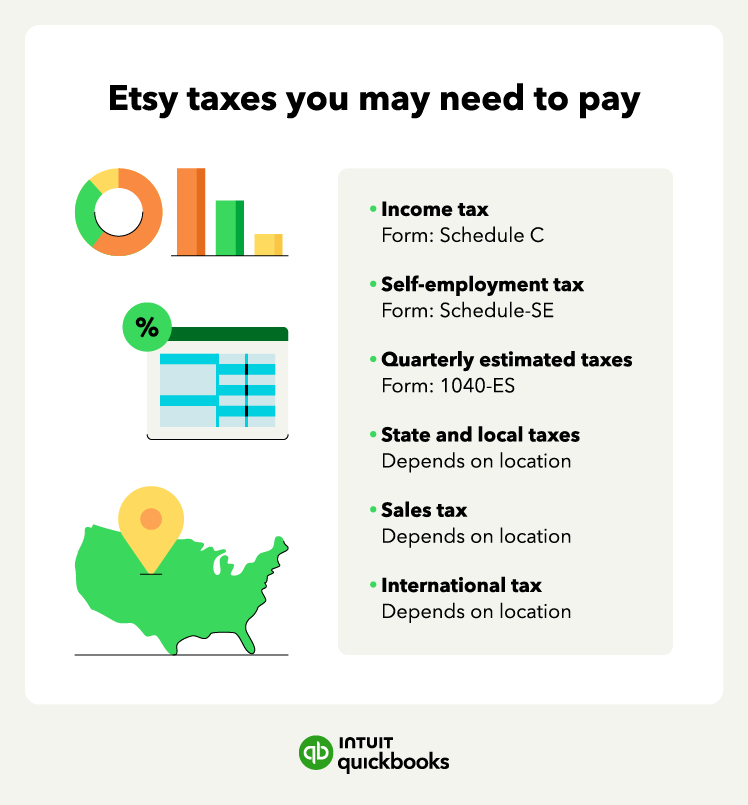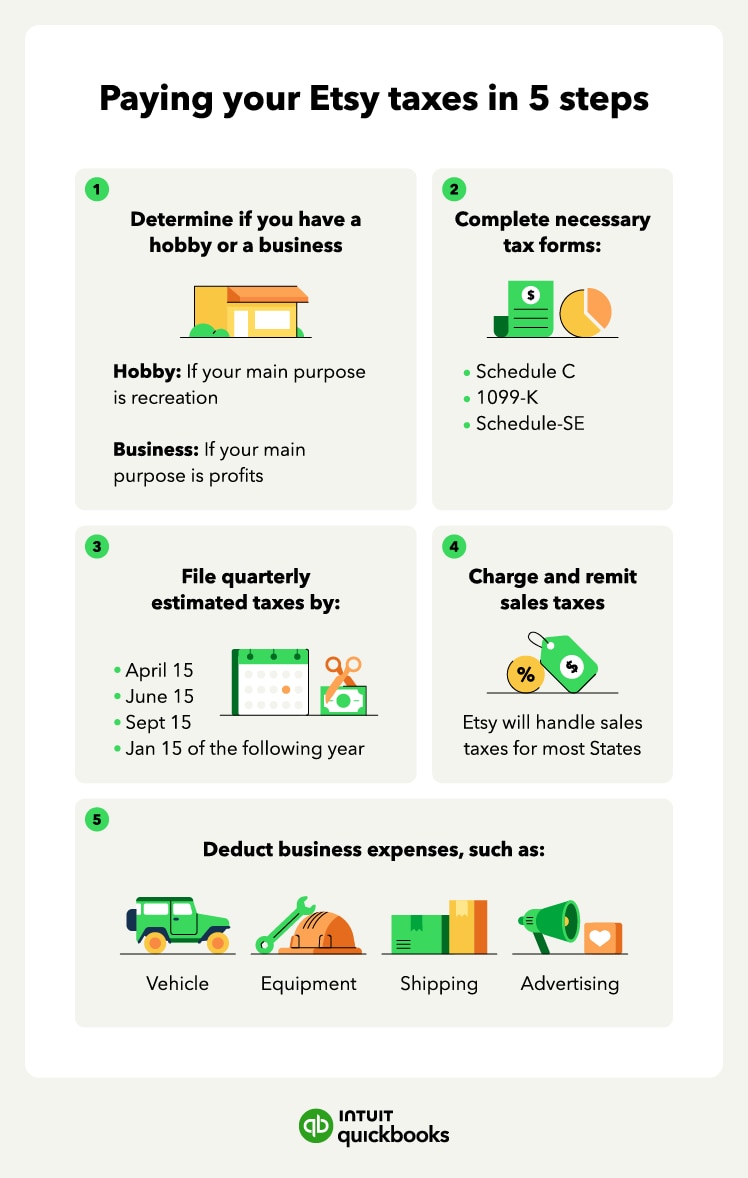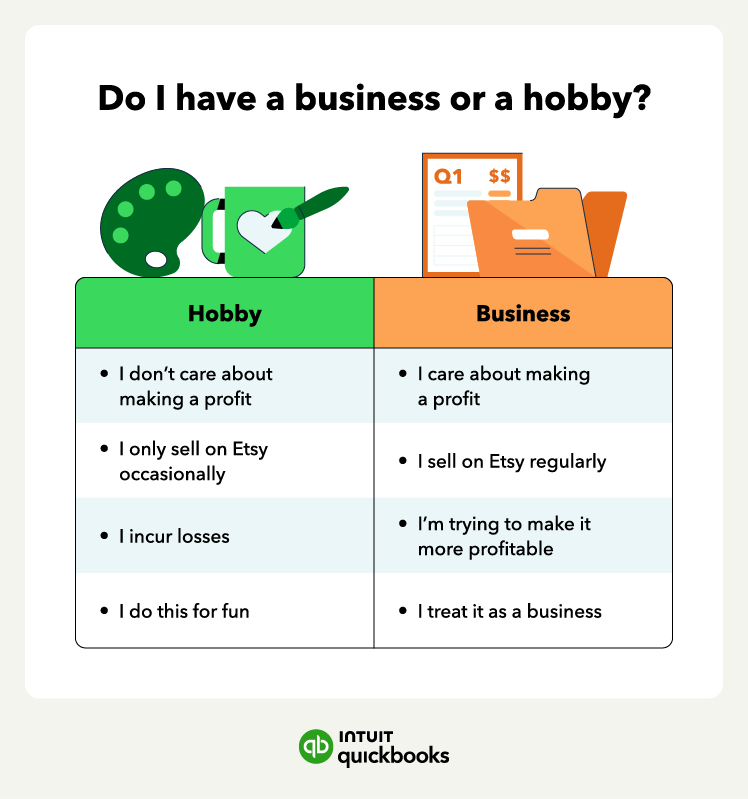2. Organize and complete necessary tax forms
If you determine your Etsy shop is a business for tax purposes, you have to organize and complete the necessary tax forms. The forms you may need to complete and submit include:
- Schedule C or Schedule C-EZ: This form reports your income and expenses to the IRS and is part of your individual tax return (Form 1040). In the Schedule C form, you’ll need to provide information about your sales, expenses, and net profit or loss.
- 1099-K: This form reports the total payments you earned from Etsy sales during the tax year. For 2024 sales, Etsy will provide a 1099-K form if you earn $5,000 or more in gross sales during a calendar year.
- Schedule SE: This form reports the self-employment taxes, which cover the Social Security and Medicare taxes. You’ll file this form if you made at least $400 in self-employed income during the tax year.
Fill out each form and ensure the information is correct, including your tax identification number, income, and expenses.
3. File your quarterly estimated taxes
Unlike W-2 employees, sole proprietors’ businesses pay estimated taxes each quarter. If you believe you owe more than $1,000 in taxes in a year, you’ll have to pay taxes quarterly.
To calculate how much you have to pay each quarter, you can base it on the previous year’s taxes if your income is consistent throughout the year or use Form 1040-ES to calculate your estimated quarterly taxes.
Once you’re ready to make your quarterly payments, you can file electronically with the IRS or send a check or money order with a payment voucher from Form 1040-ES.
Keeping your records organized is crucial to making the correct payments on time. Consider using software that integrates with Etsy, like QuickBooks, to keep track of your sales, expenses, and deductions.










 Don't assume Etsy handles all your sales tax obligations. Check your state's requirements to ensure you're compliant.
Don't assume Etsy handles all your sales tax obligations. Check your state's requirements to ensure you're compliant.

 Set up calendar reminders or use
Set up calendar reminders or use 







